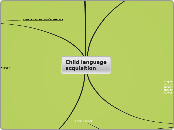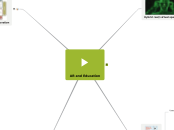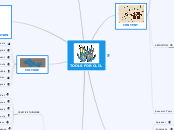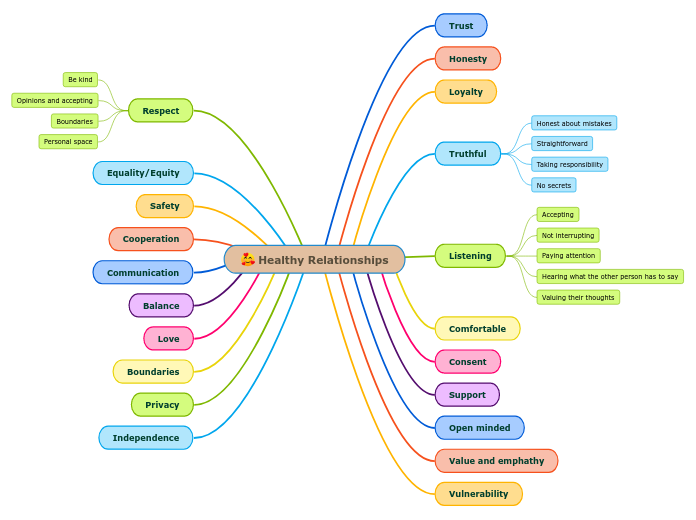Child language acquisition
LEARNING TO WRITE
SPELLING
BARCLAY'S STAGES
ROTHERY'S STAGES
GENTRY
KROLL'S THEORY
LEARNING TO SPEAK
RODGER BROWN
QUESTIONS AND NEGATIVES
BERKO AND BROWN'S THEORY
TRENDS IN PHONOLOGICAL DEVELOPMENT
CDS- CHILD DIRECTED SPEECH
HALLIDAYS THEORY
POST TELEGRAPHIC STAGE
TELEGRAPHIC STAGE
TWO WORD STAGE
HOLOPHRASTIC STAGE
Common errors made by children
HYPONYMY: This is where a child
develops a special word within a
group and then uses it to describe
that group in general e.g. ‘skirt’ is
used to describe all clothing.
OVEREXTENSION: Sometimes a child
will use the same word for a group of
similar objects e.g. a banana, pear
and orange are all called ‘apples’.
MISMATCH: This is where a child will make a statement about one object in relation to another, for example a mum points to a horse in a stable and says ‘that’s a horse’ but when the child looks over the horse has moved, so the child now associates the word horse with a stable.
UNDEREXTENSION: A child may know
the word for an object but they only
apply it to a single one e.g. ‘I have
shoes on my feet, what’s on your feet daddy?’
BABBLING STAGE
For the first year and a half of a child’s life their only form of communication is through sounds. Although these sounds may all seem very similar they can actually be categorised into five groups: biological noises (0-2 months) these are the first sounds a baby will make; cooing and laughing (2-5 months) from uncontrolled noises a baby then develops some control over their voice and uses it to express emotions and get attention; vocal play (5-8 months) as control over their vocals increase the child starts to become more playful and adventurous with the variety of sounds they make; babbling (6-12 months) although these sounds may seem unimportant the child is in fact learning themselves to pronounce vowels and the simplest consonants; and finally melodic utterances (9-18 months).
Main topic
GENERAL THEORISTS
GENDER THEORISTS
ZIMMERMAN AND WEST
DEBORAH TANNEN
DALE SPENDER
ROBIN LAKOFF
PIAGET
This theory links
language acquisition
directly to INTELLECTUAL
DEVELOPMENT.
Suggests that children
can only use certain
linguistic structures when
they understand the
CONCEPT.
E.G. tense and size.
A CHILD CAN'T USE THE
CORRECT TENSE UNTIL
THEY UNDERSTAND THE
CONCEPT OF TIME.
COGNITIVE THEORY
BRUNER
Altering the way
we talk to children
is called:
-Motherese speech
OR
-Caretaker speech
Interrogatives are used
to invite the child to
participate
Adults alter the
way they talk to
children giving
them oppertunities
to take part in the
conversation.
THEY ENCOURAGE THE CHOLDREN
TO SPEAK MORE, SO THAT THEY CAN
LEARN THE CORRECT WAY TO SPEAK.
Bruner theorised that adults
simplify their utterances when
speaking to children.
INTERACTIVE THEORY
SKINNER
POSITIVE/ NEGATIVE
REINFORCEMENT
Skinner also
theorised that
parents automatically
reinforce and correct
their childs language
in order to teach them
the correct way to speak.
Children learn to speak by
imitating the language/structures
that they hear.
BEHAVIOURIST THEORY
CHOMSKY
LAD- Lianguage acquisition device
Chomksy theorised that
children automatically begin
to recieve and make sense
of utterances.
Believes that children
are born with an innate
capacity for language
development
NATIVIST/INNATENESS THEORY
LEARNING TO READ
A FRAME WORK FOR ANALYSING
CHILDREN'S READING
HARRIS AND COLTHEART'S THEORY
BRUNER'S LASS THOERY
THE LEARNING TO READ STAGES









